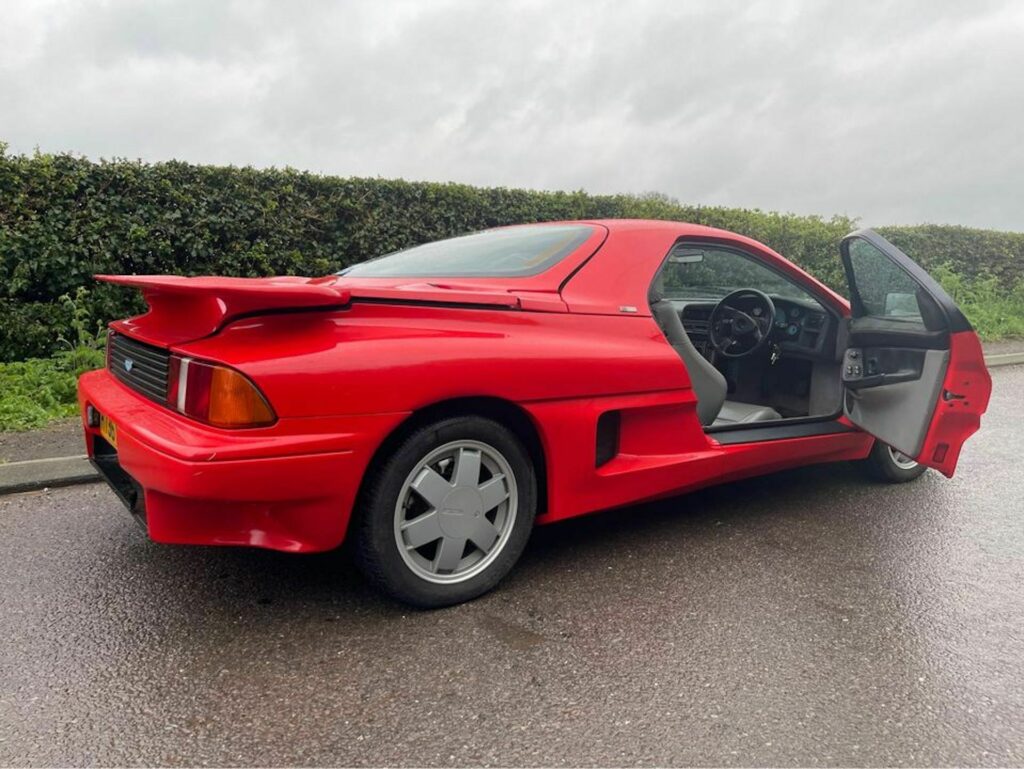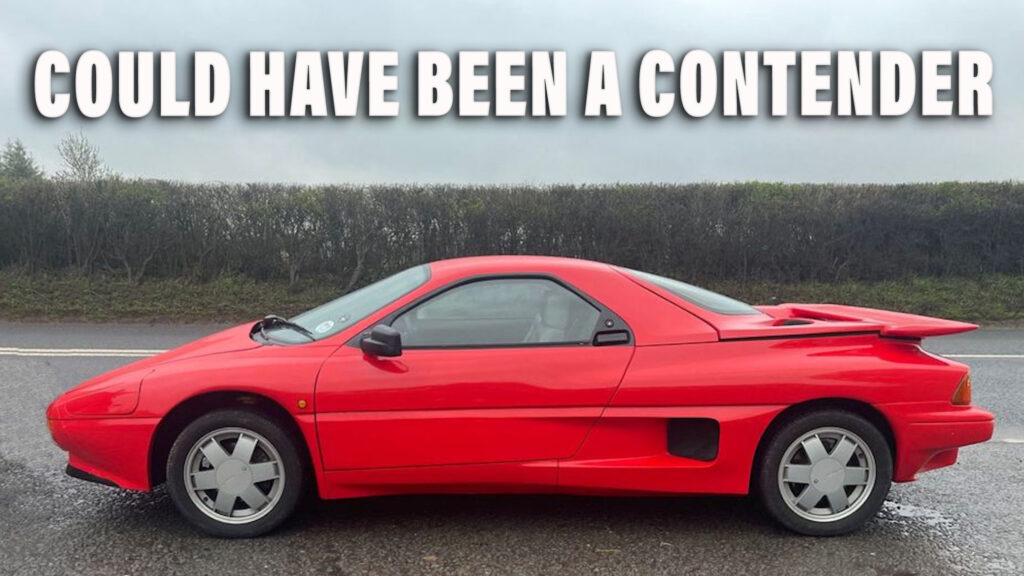If you grew up in the U.S. in the late 1980s and were interested in cars, you may remember Gerald Wigeart, whose Vector supercars promised so much but failed to deliver, party because they were terrible, and partly because Vector failed to deliver more than a handful to customers.
In the UK at the same time we had the Panther Solo, which while not aiming at the same performance heights as Vector, always seemed to remain equally out of reach. There were endless magazine stories about its development and how the launch was just around the corner. But when it did finally arrive it proved overweight, overpriced and underpowered, and quickly disappeared having found only, yes, a handful of customers.
That tiny production run means Solos rarely appear for sale, so when one does surface, it’s a big deal, and don’t go thinking that its flop status means you can pick one up for peanuts. This one, spotted on Facebook in photos so bad they’d shame a $500 Fiesta, is for sale for a cool £100,000 ($124,000). It looks fantastic, and what makes it even more intriguing is that it’s listed as having just one owner and only 5,561 miles (8,950 km) on the clock.
So who is Panther and what exactly is a Solo? If you know Panther at all, it’s probably for the insane six-wheel Panther 6, or the Morgan-style Lima and Kallista sports cars. But in the early 1980s the company’s new boss, Korean businessman Young C. Kim, decided to build an affordable mid-engine sports car.
Related: This 200-MPH, Triple-Axle Panther Was A 1970s Coke Binge On (Six) Wheels

Unfortunately, so did Toyota, in the form of the MR2, so that was the end of Plan A. But Kim didn’t give up. He stretched the stillborn Solo 1 to create two extra seats, fitted the 2.0-liter turbocharged four from Ford’s Sierra Cosworth and added all-wheel drive. Throw in the use of composites and aluminum for the chassis and you had a car that seemed highly sophisticated for the time.
That time was 1987, but Panther didn’t deliver its first car until almost three years after the Solo 2’s ’87 Frankfurt Motor show debut, and the few buyers who hadn’t canceled their orders ended up paying 30 percent more for their cars than they’d been expecting. That might have been acceptable if the car was a world-beater to drive, but Autocar’s 1990 road test was less than effusive. The mag’s testers praised the grip and steering feel from the incredibly skinny 195-section front tires, but criticized the brakes, slow steering ratio, the coarse 201 hp (204 PS) Cosworth engine’s off-boost lethargy and its lack of straight-line shove. Zero to 60 mph (96 km/h) took 6.8 seconds at a time when a similarly-priced Lotus Esprit Turbo would do the job 2 seconds faster.
Only around 13 cars are believed to have been built built before Panther pulled the plug, though apparently the company investigated the possibility of a Solo 3, powered by a twin-turbo engine or a 3.9-liter Rover V8. Which leaves us with a classic case of what might have been – and a $124,000 example of what actually was. If there’s a better, more original example of a Solo 2 than this car out there somewhere, we haven’t seen it.



























